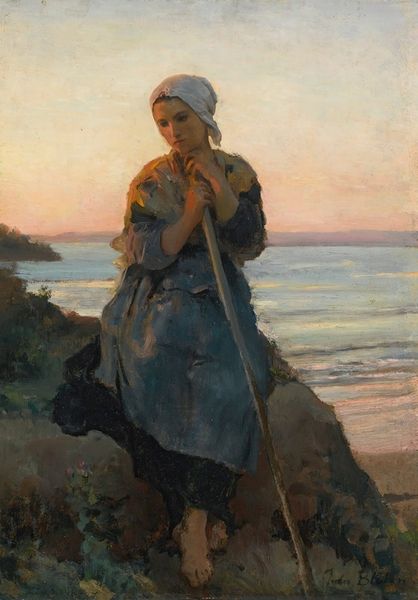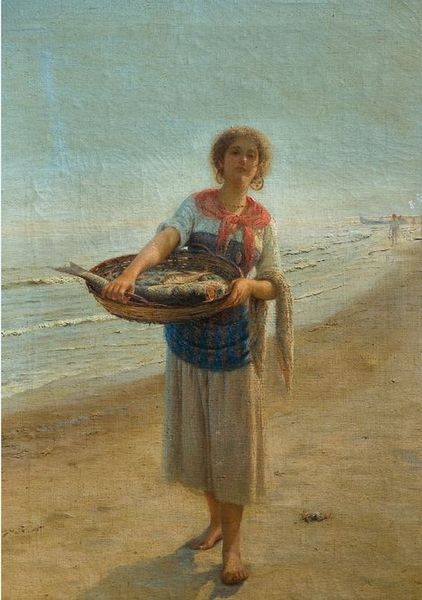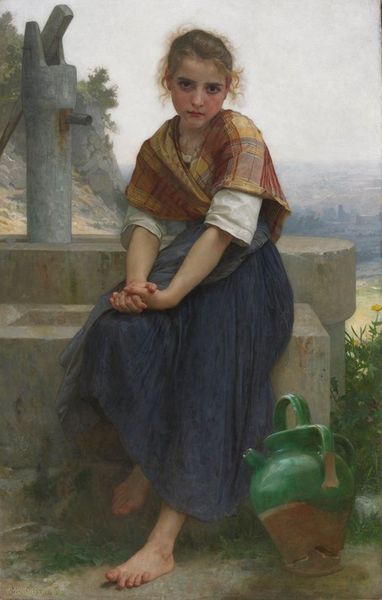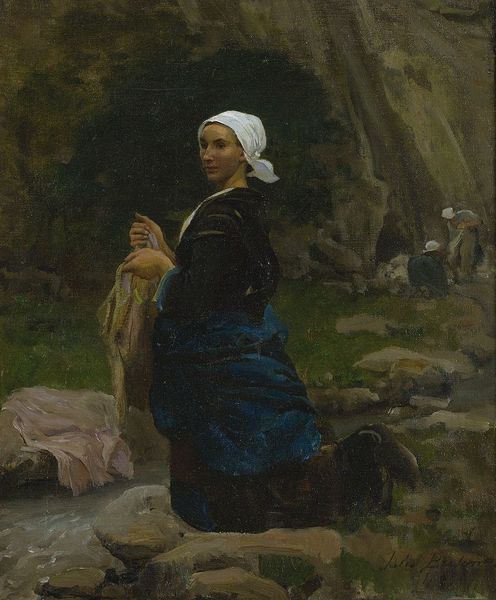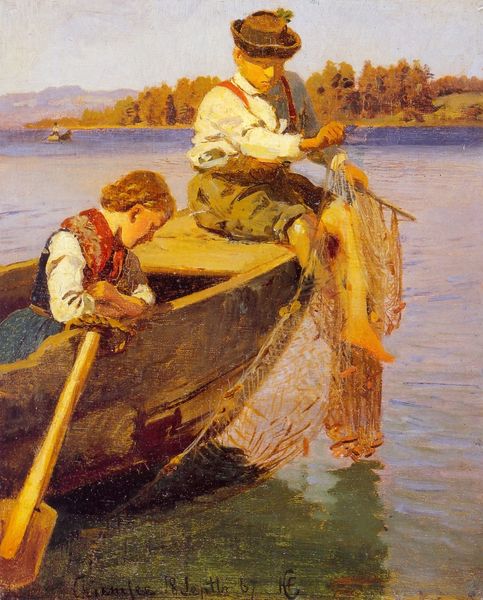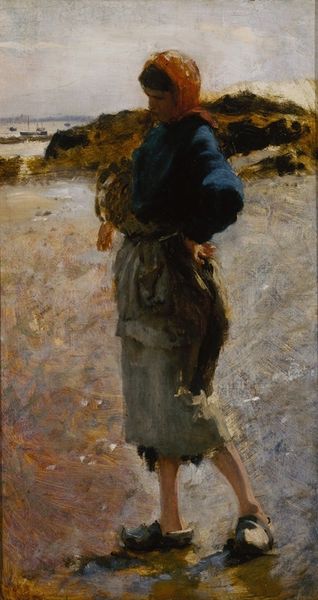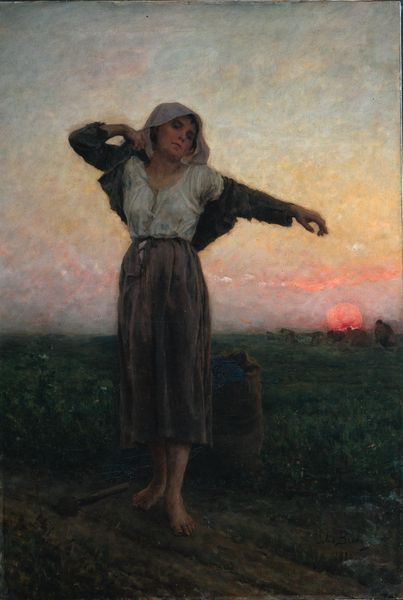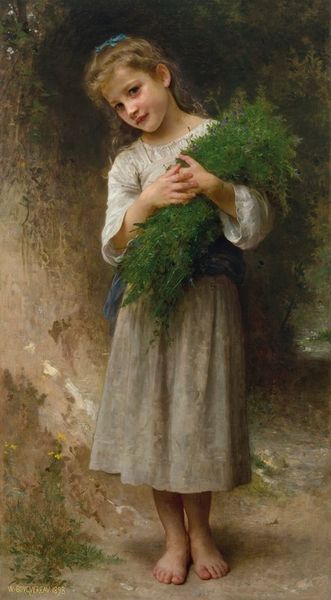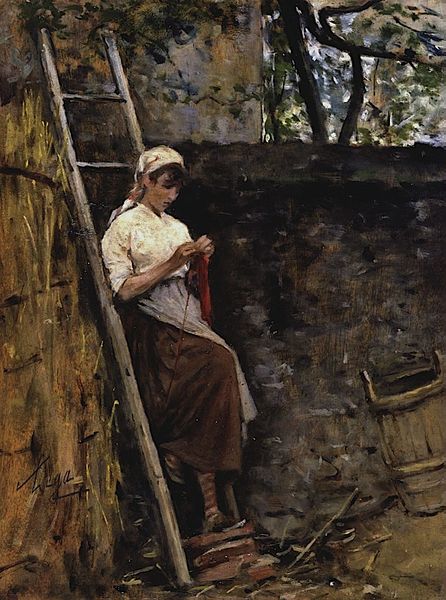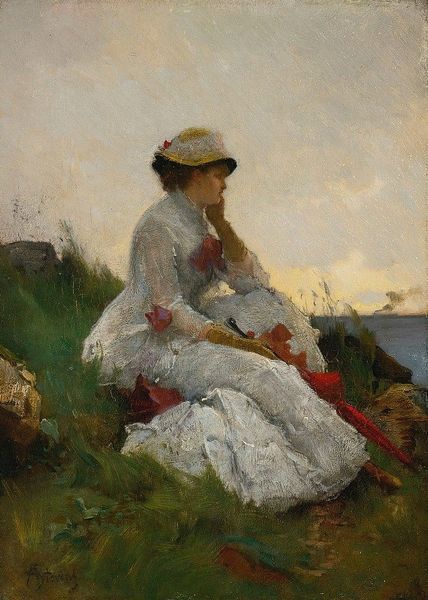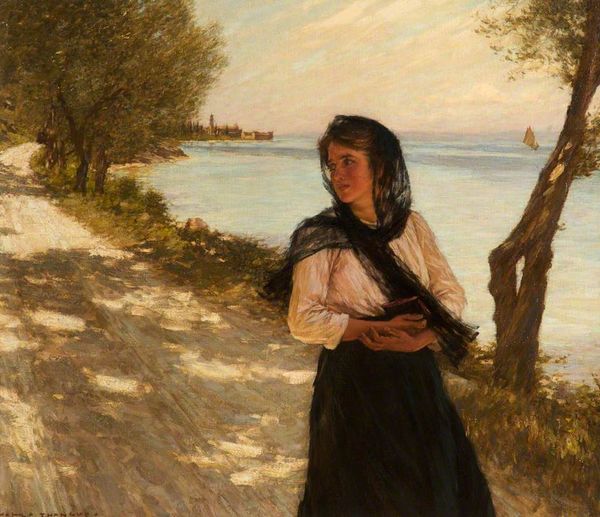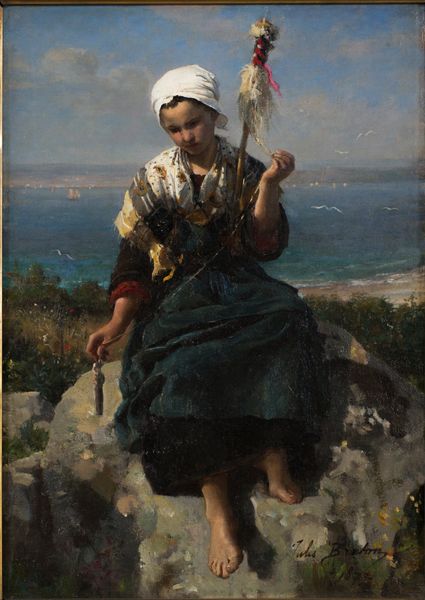
Dimensions: 100 x 70 cm
Copyright: Public domain
Curator: Jules Breton’s "A Fisherman's Daughter," completed in 1876, presents a poignant snapshot of working-class life along the coast. It’s currently held at the Musée de la Chartreuse de Douai. Editor: My first impression is one of melancholy beauty. The young woman's downward gaze and the muted colors evoke a sense of quiet resignation, contrasting with the picturesque coastal landscape. Curator: Breton’s skillful use of oil-paint and plein-air techniques allows him to capture both the figure's detailed textures – the roughness of her clothes, the delicate net she repairs – and the atmospheric quality of the landscape behind her. It’s this duality that anchors the piece in Realism. Think about how Breton presents a raw, unglamorous image of labor and its cost to the community. Editor: Precisely! Beyond the technical skill, I see this painting as a social commentary. It offers an insight into the lives of women whose labor often went unseen. This image allows us to think critically about gender roles and class distinctions inherent in a maritime community, the fisherman depending on the work and maintenance performed by a network of women in their lives. There's an undercurrent of hardship conveyed through her bare feet and the visible wear of her clothing. How are we meant to consume that hardship as spectators today? Curator: We must consider the means by which these images entered the visual regimes of the time. The artwork complicates this because, although we see "realism", this work was highly desired and purchased by wealthy people during this time who could only imagine her labor as being far from their own lives, or imagine it sentimentally and with privilege. How does labor become picturesque for whom and at what cost? It does provide commentary on social and material conditions, yet its consumption needs critical historicizing. Editor: Absolutely. And the details contribute to that. Her posture, slumped slightly against the rocks, hints at the fatigue and physical toll exacted by this labor. It pushes viewers to think past Romantic depictions of country life. What can her position, location on a "precipice" and her action of net maintenance be interpreted to tell us? It is neither hopeful or celebratory. It has the tinge of both tragedy and potential hope as she maintains that which connects her community to life. Curator: These contrasts and dualities show that even through genre-painting the value of the works can provide layers of important complexity about work, gender, class, materiality and their meanings and relationships to their audience. Editor: It reminds me that visuality and culture cannot be detached from material conditions.
Comments
No comments
Be the first to comment and join the conversation on the ultimate creative platform.
